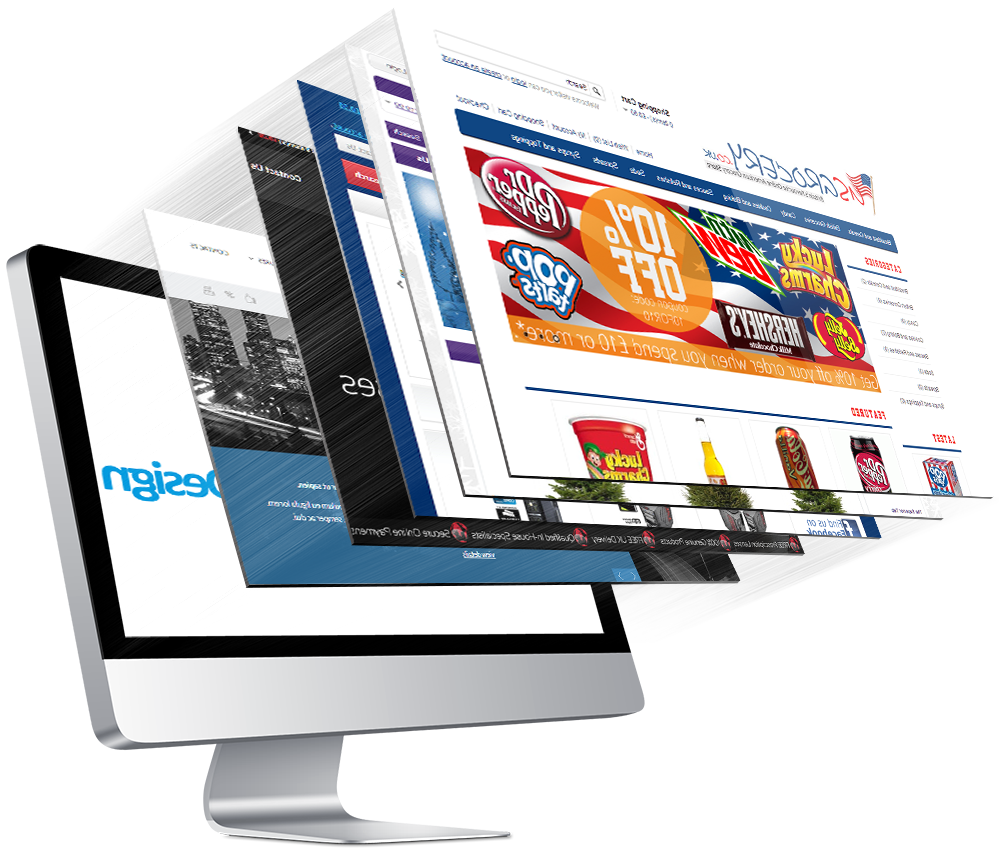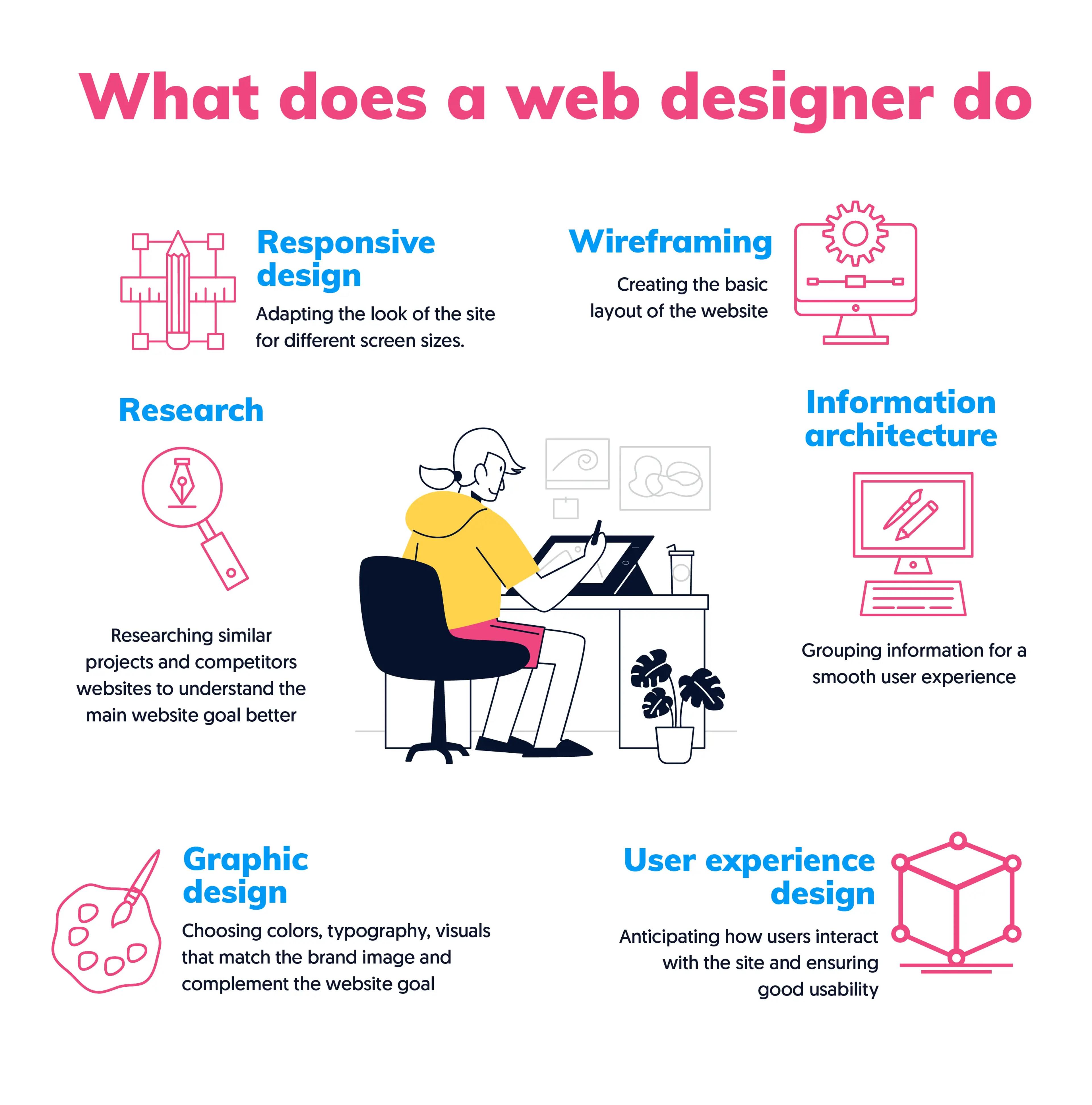Website Design London Ontario for Creative and Tech Startups
Website Design London Ontario for Creative and Tech Startups
Blog Article
Exactly How to Successfully Integrate Looks and Functionality in Web Style
When making a website, you require to strike an equilibrium in between visual appeals and performance. It's not practically looking good; your layout ought to additionally serve a purpose and guide users properly. By concentrating on simplicity and intuitive navigating, you can develop an interesting experience. What elements genuinely improve functionality while preserving aesthetic appeal? Let's discover the vital principles that can cause an unified mix of elegance and feature.
Recognizing the Value of Aesthetic Appeals and Performance
Recognizing the equilibrium between aesthetic appeals and functionality is vital for developing a reliable user experience when you design an internet site. An aesthetically enticing site grabs focus, however it's the capability that keeps individuals involved. Visitors will quickly shed passion and leave.Consider your target audience and what attracts them in if your website looks fantastic yet is challenging to navigate. You want to create a design that shows your brand name while making certain ease of usage. Streamlined designs, user-friendly navigating, and clear contact us to action can enhance both looks and performance.

Concepts of Efficient Website Design
To produce an efficient internet layout, you require to comply with numerous vital concepts that boost both user experience and aesthetic charm. Initially, focus on simplicity; a clean design aids users browse easily. Use a regular shade plan and typography to keep comprehensibility across your website. This promotes familiarity and trust.Next, ensure your style is responsive. Customers access internet sites on numerous gadgets, so your design needs to adjust flawlessly. Focus on visual power structure; emphasize important elements with size, positioning, or color to guide individuals' focus.Finally, incorporate ample white area. It protects against clutter and makes web content extra digestible. Remember, efficient internet style balances looks and functionality, so every style option must serve an objective. By complying with these principles, you'll produce a site that's not only aesthetically enticing but also user-friendly, inevitably keeping site visitors engaged and urging them to return.
Prioritizing User Experience
When focusing on individual experience, you'll desire to begin by comprehending what your individuals truly need. Streamlining navigating layout can make a significant difference in how conveniently they find what they're trying to find. Also, boosting aesthetic hierarchy helps guide their focus to one of the most vital components on your website.
Understanding Individual Demands
Recognizing user needs is vital for producing an appealing internet experience that maintains site visitors returning. To accomplish this, you must identify the goals and preferences of your target audience. Start by performing user research, like studies or interviews, to collect understandings on what customers value most. Focus on their pain points and difficulties when communicating with comparable sites. This information enables you to customize your style, guaranteeing performance straightens with individual expectations. In addition, consider creating user personalities that represent various segments of your target market, aiding you picture their requirements during the style process. When you prioritize recognizing individual needs, you create a site that not only looks wonderful but additionally delivers a smooth, enjoyable experience that cultivates loyalty.
Simplifying Navigating Layout

Enhancing Aesthetic Power Structure
A strong aesthetic hierarchy is crucial in directing individuals via your internet site and guaranteeing they involve with vital web content. To achieve this, utilize color, spacing, and size purposefully. Make important components like headings larger and bolder than body text, attracting interest immediately. Make use of contrasting colors to highlight calls to activity, urging clicks. Furthermore, use adequate white area to separate areas, making content digestible and inviting.Consider the flow of info; organize elements rationally, leading customers' eyes from one indicate the next. Usage visual hints, like arrows or lines, to route focus. By prioritizing aesthetic pecking order, you improve individual experience and raise the likelihood of conversions, ensuring your web site is both visually pleasing and functionally reliable.
Color Concept and Its Effect On Functionality
While selecting the appropriate shades for your internet site may look like a small detail, it substantially influences usability and customer experience. Color impacts how customers regard details and can improve or hinder navigating. For instance, contrasting shades can assist crucial components stick out, making it less complicated for visitors to discover what they need.Additionally, think about the psychology of colors: blue usually inspires trust, while red creates seriousness. Recognizing your target market can guide your shade choices, ensuring they reverberate well.Moreover, constant color design assist build brand name identity, making your internet site more unforgettable. Nonetheless, be careful-- way too many shades can overwhelm customers. Stay with a minimal palette that enhances your content and preserves clarity.Incorporating accessibility is additionally essential; validate your shade mixes get along for those with visual disabilities. By attentively applying color concept, you'll boost usability and develop a more engaging customer experience.
Typography: Harmonizing Design and Readability
Shade options established the stage for your web site, however typography plays a similarly essential duty in enhancing user experience. You want your message to communicate plainly while additionally mirroring your brand's individuality. Begin by selecting typefaces that are not just attractive yet additionally clear. Sans-serif typefaces usually function well for digital screens, as they're much easier to check out at various sizes.Maintain a pecking order by utilizing different font sizes and weights; this overviews users through your material easily. Think about line spacing and letter spacing; also limited can frustrate visitors, while also loose can disrupt the flow. Limit your font choices to two or 3 to maintain the style cohesive.Finally, constantly check your typography throughout various gadgets and web browsers. What looks good on one display may not on one more. Stabilizing design with readability guarantees that your message reverberates, maintaining your target market informed and involved.
Responsive Design: Making Appearances Deal With All Instruments
To assure your web site looks great on any gadget, you'll need to accept receptive layout concepts. This approach linked here warranties your website adapts to various screen dimensions, supplying an excellent user experience. Beginning by utilizing liquid grids and flexible images that scale perfectly. Rather of fixed dimensions, choose percents and family member systems, allowing your design to change dynamically.Next, implement media queries in your CSS. These allow you use various designs based on device characteristics, like screen size. In this manner, you can maintain aesthetic allure while assuring functionality.Don' t neglect about touch targets; make particular buttons and links are simple to tap on smaller sized displays. Focus on essential material, so customers can easily browse your site no matter their device. By concentrating on these components, you'll develop an engaging, visually appealing experience that satisfies the requirements of all individuals, whether they get on a tablet computer, smartphone, or desktop .
Performing Usability Screening for Continual Improvement
To improve your web style, you need to set clear functionality goals that line up with customer needs. By carrying out user tests, you can collect valuable responses on how genuine individuals interact with your site. Examining these outcomes will certainly help you make informed renovations and develop an extra effective customer experience.
Specifying Use Goals
While aesthetic appeals can attract individuals in, defining use goals is necessary for guaranteeing their experience continues to be seamless and gratifying. Begin by determining what you desire users to achieve on your website (website design london Ontario). Consider their requirements, habits, and tasks. Are they searching for info, buying, or signing up for a newsletter? Develop clear criteria to determine success, like job conclusion prices or time on job. Focus on intuitive navigation, available web content, and responsive style to boost use. Regularly revisit these goals as individual expectations evolve. By defining functionality goals, you develop a framework for assessing and improving your website's performance. This emphasis on use not just improves user complete satisfaction but likewise strengthens the total effectiveness of your layout
Performing Customer Examinations
Conducting user examinations is crucial for fine-tuning your website and guaranteeing it fulfills your audience's requirements. Beginning by identifying your target customers and producing a test plan that details your goals. Make use of a mix of qualitative and quantitative methods, such as studies, interviews, and task-based observations, to gather detailed feedback. Welcome participants to browse your site while you observe their interactions and keep in mind any troubles they encounter. Motivate open dialogue to record their ideas and sensations about the style and functionality. Keep sessions brief and concentrated, ensuring you cover vital areas without frustrating customers. Finally, make certain to record all findings, as this info will certainly be vital for making enlightened layout choices that boost both aesthetics and usability.
Evaluating Examination Outcomes
Just how can you properly assess the outcomes of your functionality tests to drive constant improvement? Beginning by classifying feedback into typical motifs. Seek patterns in user habits that highlight pain points or locations for improvement. Use measurable information, like task conclusion prices and time on job, to measure usability objectively. Do not fail to remember to think about qualitative insights from user remarks; they frequently expose underlying problems that numbers can not show. Focus on one of the most impactful findings and develop actionable products for your layout team. Remember, it's concerning iterating-- implement adjustments, then examination again. This cycle of screening, evaluating, and refining aids you equilibrium aesthetics and capability, guaranteeing your web site satisfies individual demands effectively while preserving visual Web Site charm.
Often Asked Inquiries
Exactly how Do I Pick the Right Shade Scheme for My Site?
To select the appropriate shade palette for your web site, consider your brand's personality, target market, and psychological effect (website design london Ontario). Usage shade psychology, create consistency, and warranty readability. Examination combinations to see what resonates finest with visitors
What Devices Can Help With Website Design Visual Appeals and Performance?
You can utilize tools like Adobe XD, Figma, and Sketch to improve your website design's visual appeals and capability. These systems use instinctive interfaces, cooperation attributes, and pre-made templates to improve your creative process and enhance your styles.
Exactly How Can I Include Animations Without Endangering Capability?
To incorporate animations without jeopardizing performance, prioritize subtle results that improve customer experience. Use CSS computer animations for smoother communications, guarantee quick load times, and examination on different tools to maintain performance while including visual charm.
What Are Usual Blunders to Prevent in Web Design Appearances?
When developing, prevent cluttered formats, bad shade selections, and irregular typefaces. Don't neglect mobile responsiveness, as it can push away individuals. Verify your design lines up with your brand name, developing a smooth experience moved here that involves site visitors properly.
Just how Often Should I Update My Web site's Design for Optimum Aesthetic Appeals?
You ought to update your internet site's layout every 1-2 years to stay on par with trends and preserve suitable appearances. Frequently restoring visuals helps engage visitors and guarantees your site stays enticing and user-friendly. When you design a website, recognizing the equilibrium in between appearances and performance is vital for creating an efficient user experience. To develop an efficient web layout, you need to adhere to numerous essential concepts that improve both user experience and visual allure. Individuals accessibility sites on numerous tools, so your design needs to adjust effortlessly. When prioritizing user experience, you'll want to begin by comprehending what your users really need. Start by performing customer research, like meetings or studies, to gather insights on what users value most.
Report this page